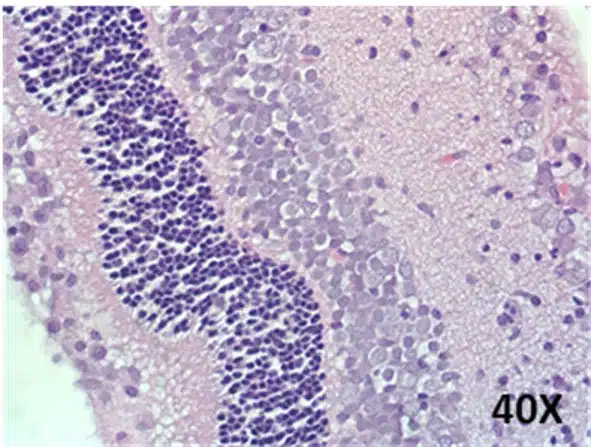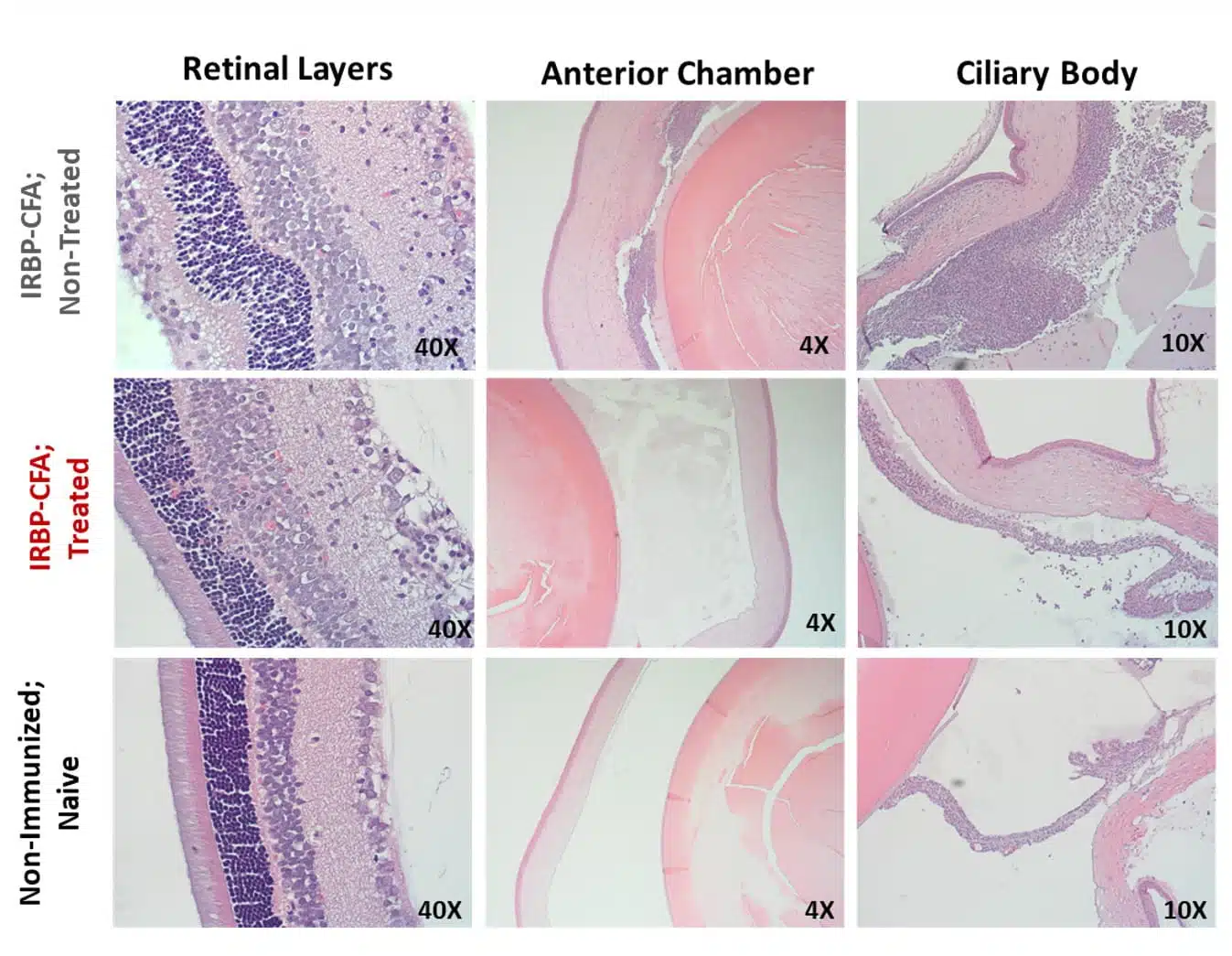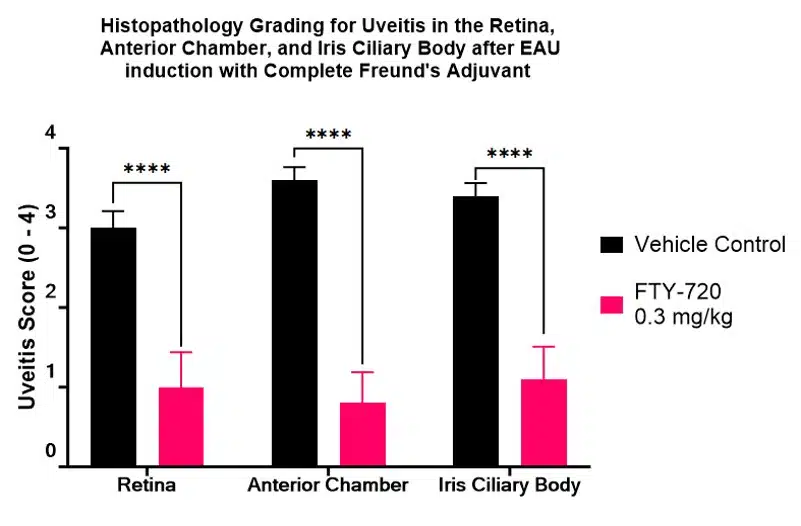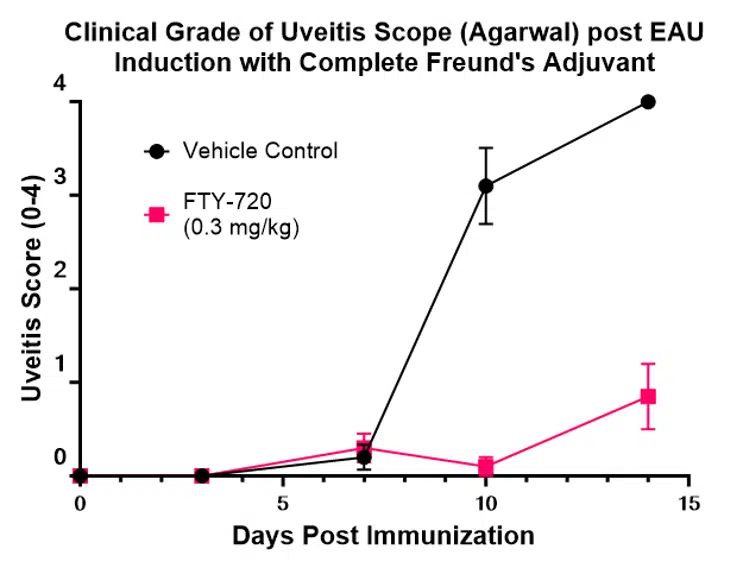
Select from our optimized experimental autoimmune uveitis models or work with us to generate customized solutions specific to the needs of your investigational product.
Species Selection
We have the ability to work with mouse, rat, and rabbit models of experimental autoimmune uveitis.
Induction Methods
The rat based model of EAU induced with interphotoreceptor retinoid-binding protein (IRBP) is the most common, but we can induce using various induction methods.
Treatment Routes
Topical or systemic treatment routes are most typical but other routes of administration are also available.
Standard Endpoints
Clinical scoring and histopathological analysis are the standard endpoints for our experimental autoimmune uveitis models.
Customization
Our veterinary team can incorporate custom models or methods to suit your research needs, and create customized endpoints for your study.
Featured Capabilities
Our professional veterinary staff has decades of experience supporting ophthalmic drug development using experimental autoimmune uveitis models.
Obtain blinded scoring using standardized metrics like Agarwal uveitis score.
Terminal analysis may also include traditional histology or IHC/IF of retinal cross sections to query target engagement.
Characterize effector T-cell subsets based on surface antigens and cytokine profiles or test effects on these populations with your interventional product.
Experimental Autoimmune Uveitis in Rat

Administration of Complete Freund's adjuvant and interphotoreceptor retinoid-binding protein is a common method of inducing experimental autoimmune uveitis in the rat and is a preferred model by many clients. This model develops panuveitis within 2-weeks following Th1 and Th17 effector cell responses, and is characterized by retinal and choroidal inflammation, retinal vasculitis, photoreceptor destruction, and impairment of visual function.
Representative Data: Experimental Autoimmune Uveitis Model

Histopathology Grading
Uveitis is observed across various anatomical regions including the retina, anterior chamber, and iris ciliary body. These effects can be attenuated using the immune modulator FTY-720 as a control.

Clinical Grading
Clinical uveitis in the experimental autoimmune uveitis model can be quantified using Agarwals' clinical scoring criteria. Disease onset is fully observed within 2-weeks.
Frequently Asked Questions
Answers to the most common questions about experimental autoimmune uveitis models.
Experimental autoimmune uveitis (EAU) is an animal model of human autoimmune uveitis that involves immunizing a susceptible animal species with retinal associated antigens.
We can conduct EAU studies in various species of mouse, rat, and rabbit but the most common species is rat due to being well characterized immunologically. Induction can occur from a variety of different methods.
We utilize a variety of different testing metrics including clinical scoring and histopathology to assess uveitis severity.